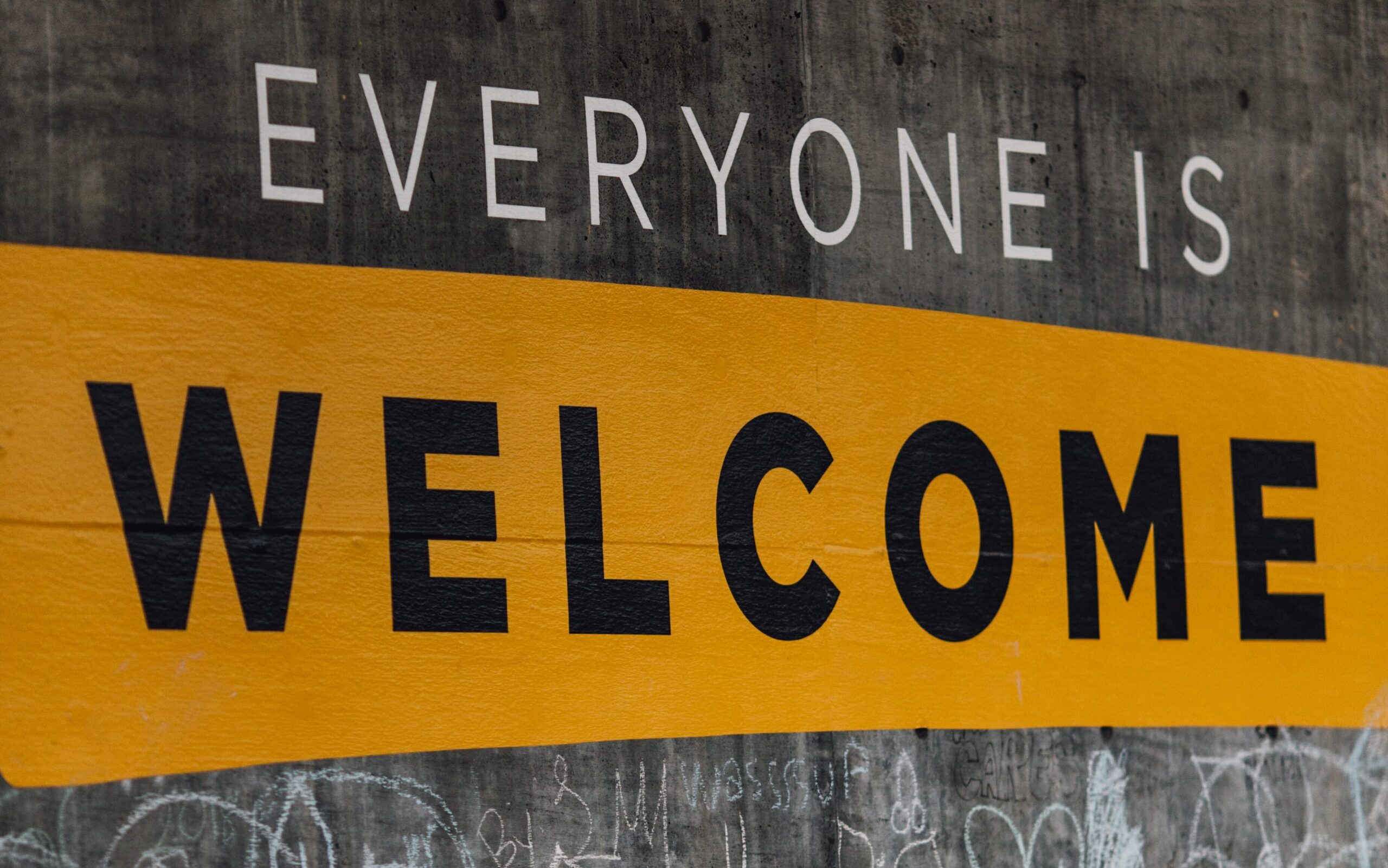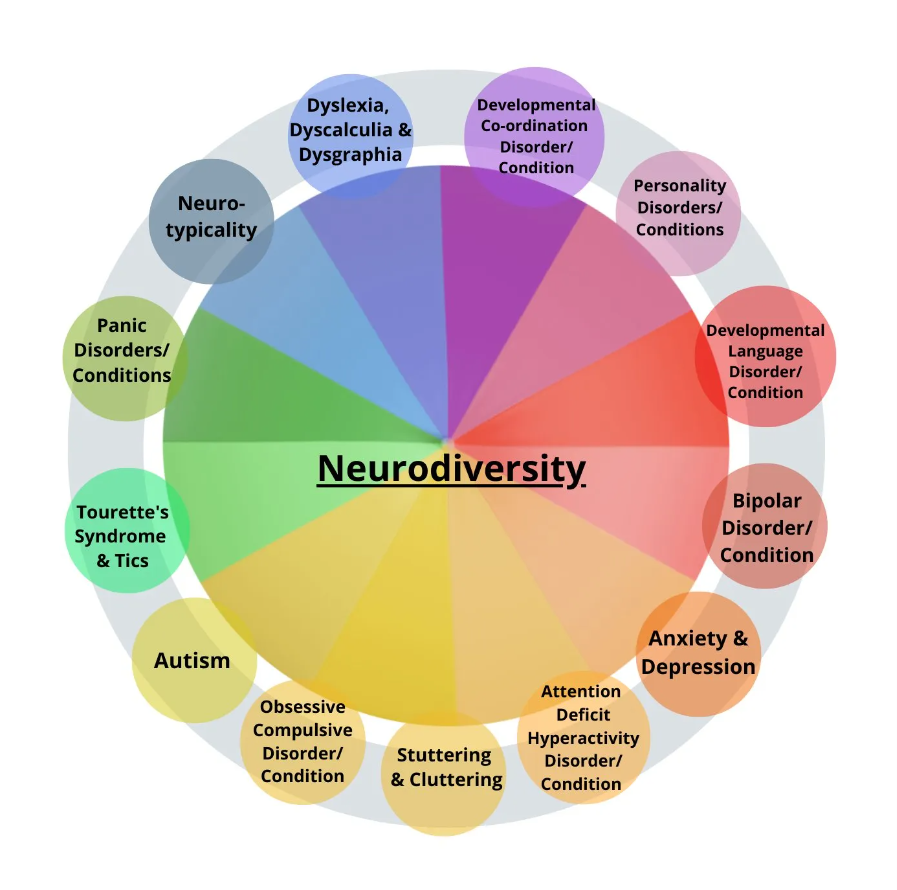Making workshops beneficial and engaging to as many people as possible includes considering the needs of multiple participants. Making workshops accessible allows a facilitator to challenge how people can engage with their session, and this can support you to think outside the box!

What do we mean by this?
We can’t always predict who will attend a session, even with a considered sign up process (such as registration forms) you never fully know the people attending, therefor you do not always have a way to find out what access needs your participants will require. Access requirements are varied and can sometimes be subtle, and unknown to the person who requires them. Not all accessibility needs are diagnosed or managed by people.
As a facilitator you can make your participants feel comfortable by advocating for the access needs of all people in the room. By acknowledging your considerations, discussing openly people’s needs, and show how you have attempted to meet these, you show people that you are a safe facilitator, someone they can trust and be open with.
Have you ever attended a session where you did not feel comfortable, or felt your needs were not met so it was inaccessible? The impact this can have is massive. Participants can feel insecure, like they don’t understand, or don’t belong, and this result in people not engaging – which feels terrible as the facilitator. It is not a fine line between people engaging and feeling welcome, or zoning out and feeling that the session is not for them. There is a lot of consideration and work to be embedded into a session to ensure participants feel they can access the space you have created.
Accessibility is a priority during preparation and planning. Sometimes, certain things are out of your control (such as fire alarm test in the building you are in, or the weather meaning you cannot get outside in the session) and these things can have an impact on the delivery of your workshop or session. The way in which you respond to different scenarios and respect the needs of participants is extremely important and shows that you have the capacity to thoughtfully consider the needs of everyone.

Read: Conflicting Access Needs
<a href=”https://autisticadvocacy.org/wp-content/uploads/2019/05/PADSA-Resource-Guide-_Conflicting-Access-Needs.pdf” target=”_blank” rel=”noreferrer noopener”> <strong>https://autisticadvocacy.org/wp-content/uploads/2019/05/PADSA-Resource-Guide-_Conflicting-Access-Needs.pdf</strong></a>
An access need is something a person needs to communicate, learn, and take part in an activity. Read this article and make some clear notes that you will utilise when designing your session.
If you feel passionate about the content of your current or future workshop sessions, you will really want to share that passion with as many people in a meaningful way. Making a workshop accessible means having multiple ‘tools’ that allow you to facilitate the workshop flexibly, for different audiences. This does not mean you need an individual plan for each participant and their potential access requirements, but instead means having a flexible workshop structure that is adaptable using the tools, both physical and mental, that you have developed.
Prior to your workshop you can ask the organisation/people/company you are delivering for or with:
- If participants have access requirements – e.g. physical disability, so access to the room/space; attention disorder, so style for the session might need to be altered.
- Where the workshop will be held, so you can plan the space to be accessible.
- How many participants will be there, so you can think about grouping, tables, amount of materials you require.
- Will a support worker or support staff be present, or volunteers be on hand to help. If not and you think you need help, is it ok for you to bring support staff, peers or pay another freelancer to help?
Or if you are advertising your session yourself, you can embed a questionnaire or sign up process that gathers the information your require:
- Do you consider yourself to have a disability or impairment?
- Is there anything that can act as a barrier for your engagement in learning?
- Tell me about how you best learn…
- How can we accommodate you in the workshop best
This information provides you with a good foundation for planning your workshop. If you have a rough or incomplete idea for a workshop, this information can provide structure and help steer your workshop in the right direction. If you have a session completely planned out, be aware that your plan will need to be flexible and change to suit a new audience each time you run it.
Jamie-Lee uses a material toolkit to support her be adaptable and consider access needs:
“I take a ‘materials toolkit’ to every workshop. This includes items such as plain paper, colourful pens and different pencils, and post it notes, which can be used by participants for doodling, note taking, asking questions, and reflecting. As the facilitator, I can also use these items to write visual prompts for participants to make information more accessible. Having a materials toolkit doesn’t just apply to creative workshops – it allows you to diversify how you can engage workshop participants via different themes and processes. These items allow participants to feel comfortable with engaging at their own speed and ability.”
The best way to practice to awareness of access needs is:
- go through each step of your workshop with a friend or family and have them be mindful of the different access needs that may occur, ask them to be your ‘critical friend’, not just tell you how great it is, but help you get better!
- Reflect during session delivery what is working, and what is not, and note down any small thing you notice that you could change next time, note down why to, this helps you remember its value.
- Reflect with your participants at the start, during, and after a session to find out what they felt worked, what they might have needed more or less of, and how they could have been supported better

Note:
Make a list of what you will have in your ‘material toolkit’. Think about stationary you just LOVE, tips and tricks you use when thinking creatively, mind mapping, working in a group or alone. Is it coloured pens, post-its, huge roll of paper? Note it down.
Considering the needs of people you have never met!
Neurodiversity describes the different ways a person’s brain processes information. Neurotypical refers to a person whose brain fits within the statistical norm and neurodivergent refers to a person whose brain differs from the statistical norm.

https://stimpunks.org/glossary/neurodiversity/
“The majority of my workshops are aimed towards neurodivergent people. I always take a printout of my plan, as well as sensory toys, post it notes, A4 white paper, a box of colouring pens and pencils along to the session. Sensory toys can help neurodivergent people keep focused and regulate their attention, like a fidget toy or object. While a printout of the plan can provide a reference point for myself and participants if they want to have knowledge of how the session will run, and refer to timings or see what is expected of them. Physical tools provide participants with a series of tactile and visual aids to support a variety of access needs. The A4 paper, post it notes, pens, and pencils provide me flexibility in how I share information and knowledge and give options for participants to feedback and engage in varied ways, other than talking out loud or writing”
Jamie-Lee Wainman
When planning sessions, it’s a good idea to start with your idea (the big Idea or that ultimate aim), think about your context (this might be the space/room, or the purpose of the session), and begin to consider a list of potential participant needs. You could start by considering the needs for each of the senses; hearing, sight, motor skills, and verbal/non-verbal. If you look at ways that you can encourage participation through varied methods, and always offer multiple options for engagement, you will not single out someone who, for example, cannot engage verbally. If you ask for feedback or a response both verbally and through post-it notes, you can ensure everyone can offer insight, ask questions, or a reply.
Like Jamie, you could even provide sensory toys, and have these in your ‘material kit’ for every session you ever run! Simple instructions, and non-leading questions, that allow people to follow clearly and bring their own answers are a useful tool. By taking these things into consideration, it accommodates a diverse range of access needs by offering different ways to reply to me and my prompts. Toys can divert and distract attention away from discomfort, and can actually encourage participation and attention span. Sometimes when someone is not looking at you, it doesn’t mean they are disengaged, it might be because of a learning requirement, they might need to fidget to concentrate well!
Alongside material objects and kit options, it is important to factor in the time and duration of a workshop as a whole, and the tasks within it. Consider whether it is essential for the participants to attend for the full duration? If someone had to leave early is there a way they can catch up with content, contact you after, or take worksheets away to continue working alone? This can offer people the option of leaving a space they are uncomfortable in, but also support them after leaving. Are breaks scheduled in, and if so, how many? If you are running out of time to fit all your ideas into the session, can you ensure that your participants get a break, move around and step out of the space for some time?

Things can always change, and there will always be factors that are out of your control. But its so important to plan. It provides a guideline for you and something to follow, but you have to be prepared to adapt during the workshops depending on how participants are responding. For example, how would you feel if everyone looked bored and yawned constantly, or if people were not answering questions when you hoped for a reply? These things can really impact your experience as a facilitator, it can throw you and leave you feeling unsure of what you are delivering. That is why, it is essential to feel prepared, have lots of engagement tools that are accessible to different needs. It is also important that you are open to moving away from your plan sometimes, be flexible and allow for the room to impact the session!
Introducing your session is one of the most important elements, as it sets the scene and explains the expectations of your participants from the outset. It is important to provide a safe space during your introduction, people can feel nervous, excited, unsure, lost, all kinds of emotions, when in a new space. Remember to include simple information such as the location of bathrooms. Invite participants to walk about, doodle, have a snack & drink (if appropriate), ask questions. Creating a relaxing space allows people to engage with the workshop as they know that their needs are met.
Reading the energy of the room is important when facilitating a workshop. This can inform how you use the physical and mental tools you have developed to ensure the session works for everyone.

Stop and Reflect:
Consider a learning environment that did not work for you.
Make a list or mind map of an experience in learning where you have felt like you did not fit in, understand or feel connected to the session. How did it make you feel, and what could have been done differently to help accommodate who you are as person?

Apply Your Thinking:
Now apply your thinking and flip the negative memory
Use the mind map above to roughly plan ways you could change or adapt the session to support you and other learners who might have felt they were not learning. How can you build a comfortable space, what tools could you use and what would you change – how?






